Table of contents
Fresh peppermint ( Mentha piperita ) is very popular as a tea due to its carminative and calming effect. It is valued for its peppery taste when eaten raw as a seasoning in the kitchen. Organic quality is preferable when using herbs.
Use in the kitchen
How do peppermint and mint differ from each other? Peppermint and (green) mint are often mistakenly used as synonyms. Although both belong to the genus Mentha, botanically speaking they are two different plants. The biggest difference, in addition to their origin, is in the taste profile: peppermint is characterized by its intense, sharp aroma. Its taste is stronger and pepperier than that of mint, which is also what gives peppermint its name. The high menthol content is responsible for the sharp taste, which is how it can be differentiated from other types of mint.
Fresh peppermint leaves can be eaten raw and are very versatile. Their pleasant, spicy, oriental flavor makes them a great addition to a variety of dishes, from raw to cooked, savory and sweet dishes.
Peppermint initially tastes warming before it develops its strikingly cooling and refreshing aroma. This makes it very popular as a refreshing drink on hot summer days. Peppermint tea is one of the most popular herbal infusions. Fresh or dried peppermint leaves are poured over with hot water. The leaves contain essential peppermint oil and, when made into a tea, have a calming and carminative effect on stomach and intestinal complaints. 1
Peppermint plays an important role in various cultures: in Greek, Turkish and Arabic cuisine, their tea is valued as the national drink. The herb is found in Greek dishes such as the traditional moussaka or the vine leaves Dolmadakia gialantzi, which are filled with rice, onions, dill, parsley, tomatoes, pine nuts and fennel in addition to peppermint. Peppermint refines the Arabic mujadarra ( lentils with rice ) and is used as an ingredient in the mint yogurt dip, which goes perfectly with falafels. Soy yogurt is a suitable vegan alternative.
Peppermint tea is also an essential part of English cuisine. In addition to the classic mint sauce, it is often combined with peas or potatoes . In Indian cuisine, it adds a fresh, spicy note to chutneys and sauces. Coriander -mint chutney is often served with samosas or pakoras. In Mexico, salsa and dips are combined with peppermint. North African and Arabic dishes are enriched with cumin, nutmeg, saffron and cinnamon, which go well with peppermint. In Morocco, mint is used in tagines, together with dried fruits such as plums or apricots .
Peppermint tastes great in smoothies with fresh ingredients such as cucumber, watermelon, strawberries, limes ,blueberries, blackberries and grapefruit . It is used in lemonades and alcoholic drinks, including mojitos, such as pineapple mojito with kale and coconut water, and other cocktails. Peppermint is used to make peppermint liqueur. For a refreshing kick, you can freeze the peppermint leaves with water to make ice cubes to give drinks a flavor experience in addition to a cooling effect.
Homemade vinegar and various salads, such as couscous or bulgur salad, can also be refined with mint. A popular variant from Lebanese cuisine is tabbouleh . A pesto made from peppermint with walnuts or almonds offers a refreshing alternative to the classic basil pesto and is ideal for using up excess raw peppermint. It can be used as a garnish on soups and desserts.
Peppermint serves as an exciting flavor in confectionery: it is used to make peppermint confectionery, peppermint pieces, peppermint coins (covered in chocolate), peppermint candies, chewing gum or for chocolate fillings and as an ice cream flavor.
Instead of fresh mint, you can also use dried peppermint. However, you should be sparing with the seasoning as it has a more concentrated aroma.
Vegan recipe for kiwi peppermint sorbet
Ingredients: 4 tablespoons fresh peppermint, 5 kiwis , 100 g sugar, some water.
Preparation: Peel the kiwis and puree them with sugar and mint using a hand blender. Add a little water if necessary. Pour into a suitable mold and prepare the sorbet in the ice cream maker or in the freezer, stirring every hour. After 3-4 hours of freezing, the kiwi-peppermint sorbet can be served. Garnish with fresh mint leaves if desired. Alternatively, you can use honey to sweeten it. For a vegan version, Agave syrup or maple syrup .
Recipe for fresh peppermint tea
To prepare a tea from fresh peppermint, pour 2-3 teaspoons of raw peppermint leaves into 250 ml of hot, but no longer boiling, drinking water and let the herbal infusion steep for 5-10 minutes. Optionally, you can add organic lemon juice and a little honey .
Vegan recipes with peppermint can be found under the note: " Recipes that have the most of this ingredient ".
| Not only vegans or vegetarians should read this: Vegans often eat unhealthily. Avoidable nutritional mistakes . |
Purchasing - Storage
The peppermint season in the DA-CH countries extends from spring to autumn . However, fresh peppermint can be found all year round in the fruit and vegetable department or in the fresh herb section of major retailers such as Coop, Migros, Denner, Volg, Spar, Aldi, Lidl, Rewe, Edeka, Hofer and Billa . It is mostly available cut. Organic supermarkets such as Denn's Biomarkt and Alnatura have organic peppermint in their range.
You often come across non-specific terms such as 'mint', but this could also refer to green mint . You can be sure if you buy peppermint as a potted plant or its seeds for your own cultivation. You can do this at hardware stores, garden centers, tree nurseries or on the Internet.
You can also buy the herb in specialist tea and spice shops, in health food stores or at markets. Dried peppermint can be found especially in the spice section of supermarkets.
The availability of peppermint varies depending on the size of the store, catchment area, etc. Our recorded food prices for the DA-CH countries can be found above under the ingredient image - and by clicking you can see their development at various suppliers.
Found in the wild
Peppermint is a perennial plant that grows wild throughout Europe, North America and Australia. It can be found along stream banks and on wet wastelands. 1
When collecting in the wild, it can often be confused with other types of mint: crossing two species often results in natural hybrids whose characteristics are between the parents. Peppermint ( Mentha piperita ) is the result of hybridization of spearmint ( Mentha spicata ) and wild water mint ( Mentha aquatica ). 3 It also reproduces very easily, which allows for rapid spread and diversification. 4 More on this in the cultivation chapter.
In Austria, horse mint ( Mentha longifolia ), water mint ( Mentha aquatica ) and field mint ( Mentha arvensis ) are the most common wild plants. 3 The smell of field mint is very similar to that of peppermint. If you crush the leaves, they smell intensely of menthol. 5 The mint species are non-toxic, vary in taste and can be used to make tea without any concerns. 3
Storage tips
How do you keep peppermint fresh for as long as possible? Peppermint keeps well when stored in a glass of water. To keep it fresh, it is recommended to change the water daily and put the glass in the fridge. You can also wrap the mint in damp kitchen paper. To make it last longer, you can dry the mint leaves. Dried peppermint should be stored in a cool, dry place. This way it will last for several months to a year, but the taste will suffer if it is stored for a long time. Alternatively, you can freeze the peppermint leaves, which will help them retain their aroma better.
Ingredients - Nutritional values - Calories
100 g of fresh peppermint (raw) has a calorie content of 77 kcal. There is hardly any fat, carbohydrates amount to 15 g and protein makes up 3.8 g. The fiber content is 8 g/100g, which corresponds to 32% of the daily requirement.
The manganese content in peppermint is 1.2 mg/100g (59% of the daily requirement). Fresh basil (1.1 mg/100g) and fresh dill (1.3 mg/100g) have a similar value. Lemongrass contains more than four times that amount. Wheat germ contains a particularly high amount of manganese (13 mg/100g).
Folate (folic acid) is contained at 114 µg/100g, which makes up 57% of the daily requirement. This value is comparable to that of fresh rosemary (109 µg/100g) and Moroccan mint (105 µg/100g). Dried herbs contain significantly more folate (eg thyme 274 µg/100g).
Raw peppermint has 32 mg of vitamin C (ascorbic acid) per 100 g, which is 40% of the daily requirement. Nasturtium has twice as much vitamin C (60 mg/100g) and parsley contains four times as much (133 mg/100g). Sea buckthorn is a particularly good source of vitamin C with 450 mg/100g. 2
Peppermint contains a variety of bioactive secondary plant substances, such as polyphenols, flavonoids, limonene, cineole and methone. 6
The complete ingredients of peppermint, the coverage of the daily requirement and comparison values with other ingredients can be found in our nutrient tables. In the article Nutrients explained you will get a detailed insight into the topic.
Health effects
Is fresh peppermint healthy? Peppermint is one of the medicinal herbs that are able to prevent various diseases. Studies show that the ingredients of peppermint, especially menthol and other secondary metabolites, are responsible for a wide range of pharmacological activities. 6 The valuable peppermint essential oil contains mainly menthol and menthone, as well as some additional components such as pulegone, menthofuran and limonene. 3,7
Peppermint is effective against malignant tumors (antitumor). Studies confirm that peppermint has antineoplastic activity by inhibiting okadaic acid and other tumor promoter genes that are responsible for tumor formation. Menthol increases the activity of the enzyme N-terminal acetyl transferase (NATs), which leads to the inactivation of tumor cells and prevents the formation of tumors, especially in the liver. This tumor-inhibiting effect increases with higher menthol consumption. 6
Peppermint plays an important role in preventing inflammation. The substances menthol and cineole contained in the oil have anti-allergenic and anti-inflammatory effects. In guinea pigs, a reduction in allergic skin reactions triggered by IgE antibodies could be observed after oral administration. Flavonoids in peppermint, particularly luteolin7-O-rutinoside, have an inhibitory effect on allergic reactions in the nose. 6
Studies also attribute liver-protective, high antioxidant, pain-relieving and radioprotective effects to peppermint. Menthol has antibacterial, antiviral and fungicidal effects. 6
Peppermint oil has been shown to have antidiabetic properties in rats, as oral intake lowered serum glucose (blood sugar) levels. Peppermint has also shown vasodilatory and blood pressure-lowering effects. 6
Peppermint has an antispasmodic effect by inhibiting calcium channels, which leads to relaxation of the muscles, especially in the digestive tract. 12,21 It promotes the flow and production of bile and thus also has a digestive effect. 21
Does peppermint have a stimulating effect? Peppermint essential oil with a high menthol content can have a stimulating effect that improves cognitive performance and reduces mental fatigue. 8 Therefore, depending on the dosage and purpose of use, peppermint can have both a stimulating and a calming effect.
Menthol has a cooling effect on the body and can therefore help reduce fever when making peppermint tea. The tea also has an antispasmodic effect, which makes it helpful against nausea and vomiting. Peppermint tea therefore helps with travel and seasickness. 6
Dangers - Intolerances - Side effects
If peppermint is not used in the recommended way or in the prescribed dose, the herb can have toxic effects despite its positive properties. When using peppermint, make sure to stick to the prescribed amounts. Here, too, the dose makes the poison.
According to the German Federal Institute for Risk Assessment, excessive amounts of essential oils (including menthol) can have negative effects on the central nervous system, kidneys and respiratory tract, especially in small children. 9 In infants and small children, there is a risk of glottic spasm (laryngospasm), which in the worst case can lead to respiratory arrest. As a preventative measure, peppermint oil is not recommended for children under the age of 4. 10
In the case of heartburn and reflux disease (GERD), the symptoms may worsen when taking peppermint, as the sphincter between the stomach and esophagus relaxes. 6,11 The use of peppermint is also not recommended for people with gallbladder disorders. 11
The components pulegone and menthofuran can be carcinogenic in high doses. However, there is no danger at low concentrations. 6,10,11
Occasionally, allergies to peppermint can occur. 12
Risk of confusion
Due to the similar appearance and relationship, there is a risk of confusion when collecting peppermint with the poisonous pennyroyal ( Mentha pulegium ). 3,13 The characteristic menthol smell of peppermint is an important distinguishing feature. Pennyroyal has a weaker, different and rather unpleasant smell. 3 Externally, they can be distinguished by their stamens: in peppermint, the stamens are the same length as the petals, while pennyroyal has significantly larger stamens. 13
The Critical Medicinal Plant Handbook states that all other wild mint species can be collected without any concerns and used to make tea. It recommends relying on your personal sense of smell when making your selection. 3
Use as a recognized medicinal plant
According to ESCOP, peppermint leaves have a recognized medical use for digestive problems, flatulence, gastritis (stomach catarrh). According to Commission E, they are used for spasmodic complaints in the gastrointestinal area as well as the gall bladder and bile ducts. The HMPC has classified peppermint leaves as a traditional herbal medicine for the symptomatic relief of digestive disorders such as dyspepsia and flatulence. Peppermint leaves are used in the form of tea, as drug powder in tablets and as a tincture. It should be noted that the use of medicinal plants that fall under 'traditional use' for the specified application area is based exclusively on many years of experience. 10
The individual dosage for making tea for adults is 1.5 to 3 g of dried tea herb in 150 ml of water. The recommended daily dose should not be exceeded: 3-6 g. For children aged 4-11, the daily dose is 3-6 g (3 cups of 1-2 g each). The HMPC does not recommend the use of peppermint leaves in children under 4 years of age. Pregnant and breastfeeding women are advised against using the herb due to a lack of data. 11
Folk medicine - natural medicine
Peppermint tea is traditionally used in folk medicine to treat coughs, bronchitis, and inflammation of the oral mucosa and throat. The tea is said to have a carminative (flatulent) effect that helps with digestive problems such as colic in infants, flatulence, diarrhea, indigestion, nausea, vomiting, morning sickness and cramps. 12
Ecological footprint - animal welfare
The ecological CO 2 footprint of a food depends on various factors. The type of agricultural production (conventional vs. organic), average or seasonal or regional production, domestic production or import by truck, ship or plane, different types of packaging and whether the goods are fresh or frozen play a decisive role. 14
The Carboncloud website states that the ecological CO 2 footprint of peppermint is 0.65 kg CO 2 eq/kg. Despite extensive research, we were unable to find any information from other sources. The ecological footprint should therefore be viewed with caution, as we do not have any comparative values. 15
The water footprint of fresh peppermint is 288 l/kg. For comparison: vegetables have a water footprint of 300 l/kg and grains 1600 l/kg. Spices have an even higher water requirement of around 7000 l/kg. 16 These values show that peppermint has a relatively low water consumption compared to other herbs and spices. This makes it a comparatively resource-saving option for cultivation.
When buying peppermint, look for organically grown peppermint. Avoid conventionally grown peppermint because of the use of synthetic fertilizers and pesticides. Studies show that mint's essential oils may act as a promising bioherbicide, stopping the growth of weeds and even causing them to die. 17 Conventional herbicides pollute the environment and often lead to resistance in weeds, while organically grown peppermint may offer a more environmentally friendly alternative.
When making peppermint tea, it is important to remember to only boil as much water as you really need. The tea manufacturer Pukkaherbs states that in 2021, 36% of its total carbon footprint was due to boiling tea water. This was because consumers sometimes boiled twice the amount of water as necessary. 18
Animal protection - species protection
The peppermint flower head, the so-called false spike, attracts numerous insects such as butterflies and wild bees. It is important for the animal world because it is an important source of food. In autumn, you can let the peppermint flower a second time to make a positive contribution to species protection. 19
Worldwide occurrence - cultivation
The origin of peppermint is unclear. It probably comes from England through breeding in the 17th century. 11 It is native to Europe and the Middle East and is now considered a cultivated plant worldwide. 7,12 The herb available commercially comes mainly from Bulgaria, Greece, Spain, Northern Europe and the USA. 1 Morocco is the main growing area with more than 90% of the peppermint produced worldwide. 7
Cultivation - Harvest
Peppermint is a perennial, herbaceous and adaptable plant that copes well with different soil and climatic conditions. It thrives best in cool, preferably humid climates and in deep, humus-rich soils that can store water well. It can be grown both in lowlands and in foothill regions with a subtropical climate. 1
It requires a neutral soil pH and low temperatures at the beginning. In the later stages of growth it prefers medium temperatures of 20-40 °C. Peppermint is sensitive to frost, especially during the germination phase. 1
There are many varieties of peppermint. One can distinguish between dark green 'black mint' varieties and light green 'white mint' varieties. 10 The best-known dark green variety is Mitcham peppermint (var. vulgaris Sole), which has characteristic reddish stems and leaves. Light green varieties have lanceolate leaves instead of egg-shaped ones. 1,10 There are also unusual varieties, such as orange mint ( Mentha x piperita var. citrata ), which gives off an orange scent, and chocolate mint ( Mentha ×piperita var . piperita ). 13
The 60 cm tall plant has square, hairy stems with decussate leaves. On the underside of the leaves are oil glands in which the essential oil is located. 10,19
Peppermint has shallow roots and spreads quickly by runners. 19 It propagates in spring from late January to early February. To do this, the cuttings from the previous year's plants are planted in new soil. It is important to keep the soil constantly moist. Regular watering promotes the growth of a large amount of green mass and tender shoots, which makes pruning easier. 1
From June to September, peppermint produces flowers that together form a false spike. Their color ranges from white to pink to purple. A second flowering may occur in the autumn. 19 Harvesting takes place shortly before flowering, depending on local conditions. Under optimal conditions, a second, but smaller, harvest can be achieved 60-75 days later. 1
Peppermint is sterile and has no viable seeds. It propagates through underground runners of existing plants, division and cuttings. The invasive plant's urge to spread always ensures sufficient plant material for propagation. 7,19
Home-grown
peppermint grows well in Grow in a pot on the balcony or terrace or in a bed in the garden. A partially shaded and wind-protected location is ideal. 20
Because the plant grows rapidly, you should keep a distance of 50 cm from neighboring plants in the garden. If necessary, you can use a root barrier. To control the growth of the invasive plant, it is best to grow it in a pot. It is advisable to replant the peppermint every 3-5 years to prevent disease. To minimize the risk, do not plant related plants such as chamomile, thyme, sage or other types of mint in the immediate vicinity. To overwinter, you can put the pot in the house or in the cellar. 20
In winter, the peppermint retreats into the ground. You can prune it in the autumn so that the plant can sprout fresh and strong again in the spring. 19
Further information
Peppermint ( Mentha piperita L.) belongs to the genus of mints ( Mentha ), which are subordinate to the mint family (Lamiaceae). 1 The genus of mints is very extensive, with up to 30 species. 13 It is difficult to define them, as natural hybrids often arise. Peppermint itself is not a separate species, but a cross, which is why it is also written mentha x piperita to taxonomically indicate its hybrid origin. 3
Alternative names
Peppermint has many names: It is also known as vein mint, noble mint, English mint, garden mint, tea mint, real peppermint, peppermintze, catnip, balsam, peperminte or Schmeckerts. In English it is called peppermint, black mint, candy mint, balm mint, brandy mint, curled mint or commercially as Mitcham. The Latin drug name for the peppermint leaves is Menthae piperitae folium .
Other uses
Peppermint oil is found as a flavoring agent in mouthwashes, chewing gum, toothpaste and cosmetic products such as shower gels or lotions. It is the most popular and widely used essential oil for flavoring medicines, including cough syrups, sleeping pills and skin care products. 1
Bibliography - 21 Sources
| 1. | Pushpangadan P, Tewari SK. 28 - Peppermint. In: Peter KV, Herausgeber. Handbook of Herbs and Spices. Woodhead Publishing; 2006. |
| 2. | USDA (United States Department of Agriculture). Nährwerttabellen. |
| 3. | Reiner H. Vielseitig nutzbar: Minzen. Garten. 1996;119(3):24-26. |
| 4. | Vining KJ, Hummer KE et al. Crop Wild Relatives as Germplasm Resource for Cultivar Improvement in Mint (Mentha L.). Frontiers in Plant Science. 2020;11:1217. |
| 5. | Arzneipflanzenlexikon info: Minze. |
| 6. | Chakraborty K, Chakravarti AR, Bhattacharjee S. Bioactive components of peppermint (Mentha piperita L.), their pharmacological and ameliorative potential and ethnomedicinal benefits: A review. J Pharmacogn Phytochem. 2022;11(1):109–114. |
| 7. | Nayak P, Kumar T, Gupta A, Joshi N. Peppermint a medicinal herb and treasure of health: A review. J Pharmacogn Phytochem. 2020;9(3):1519–1528. |
| 8. | Kennedy D, Okello E et al. Volatile Terpenes and Brain Function: Investigation of the Cognitive and Mood Effects of Mentha × Piperita L. Essential Oil with In Vitro Properties Relevant to Central Nervous System Function. Nutrients. 2018;10(8):1029. |
| 9. | BfR Bundesinstitut für Risikobewertung. Die Dosis macht das Gift - auch pflanzliche Duftstoffe sind nicht immer harmlos. 07/2002. |
| 10. | Arzneipflanzenlexikon info: Pfefferminze. |
| 11. | Achmüller A. HMPPA-Monographien. Mentha Piperita. Pfefferminze. ÖAZ 23/20:76-78. |
| 12. | Balakrishnan A. Therapeutic Uses of Peppermint –A Review. J Pharm Sci. 2015;7(7):474-476. |
| 13. | plantura garden: Minzarten: Erfrischende Arten & Sorten für Garten und Balkon. |
| 14. | Reinhardt G, Gärtner S, Wagner T. Ökologische Fussabdrücke von Lebensmitteln und Gerichten in Deutschland. IFEU Institut für Energie - und Umweltforschung Heidelberg. 2020. |
| 15. | Carboncloud. Peppermint. 2024. |
| 16. | Mekonnen MM, Hoekstra AY. The green, blue and grey water footprint of crops and derived crop products. Hydrol. Earth Syst. Sci. 2011; 15: 1577-1600. |
| 17. | Sarheed MM. Allelopathic compounds from Mint target the cytoskeleton from cell biology towards application as bioherbicides. Disseration Karlsruher Insitut für Technologie. 2019. |
| 18. | Pukkaherbs com: PUKKA. Our 2021 Impact Report. |
| 19. | plantura garden: Pfefferminze pflegen, überwintern & vermehren. |
| 20. | plantura garden: Pfefferminze pflanzen: Standort, Aussaat & gute Nachbarn. |
| 21. | McKay DL, Blumberg JB. A review of the bioactivity and potential health benefits of peppermint tea ( Mentha piperita L.). Phytotherapy Research. 2006;20(8):619–633. |

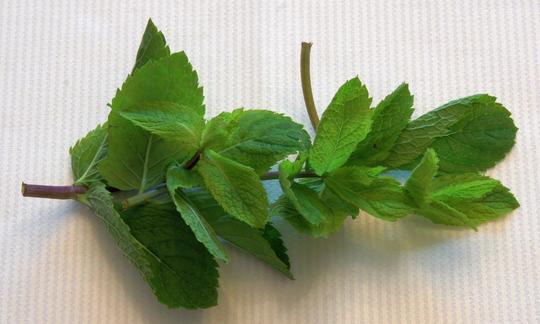

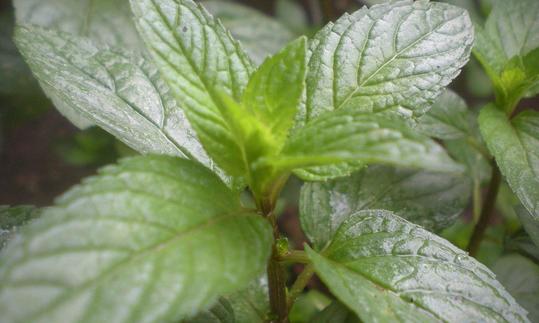

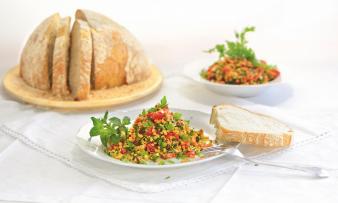
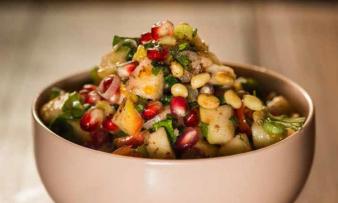
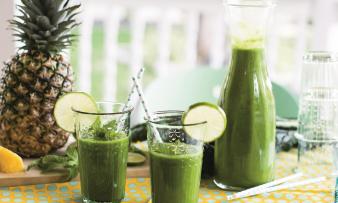





Comments